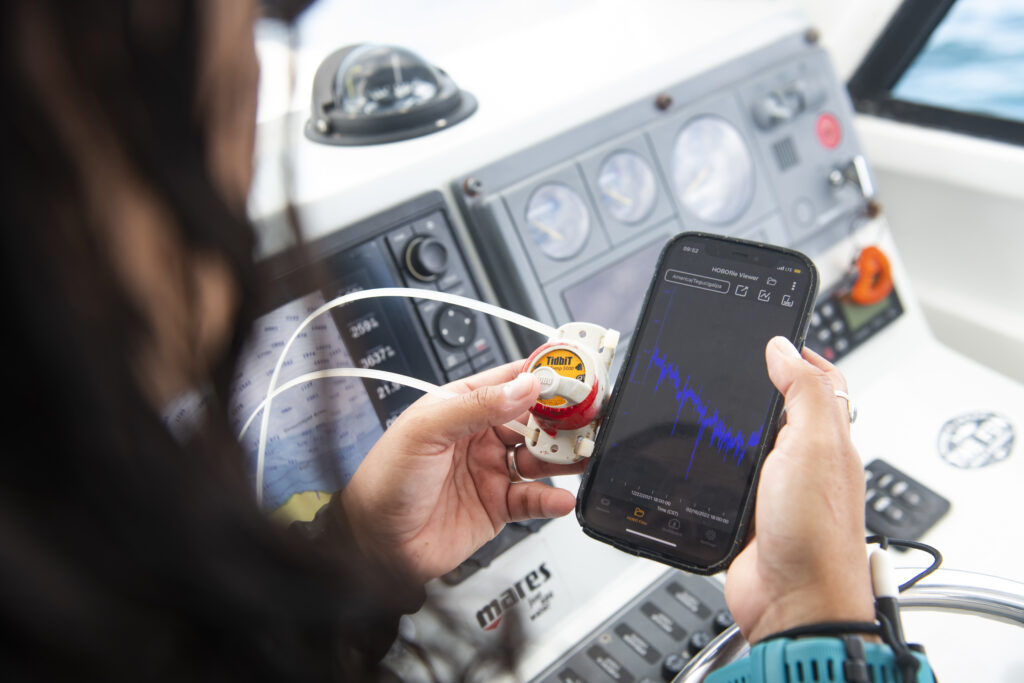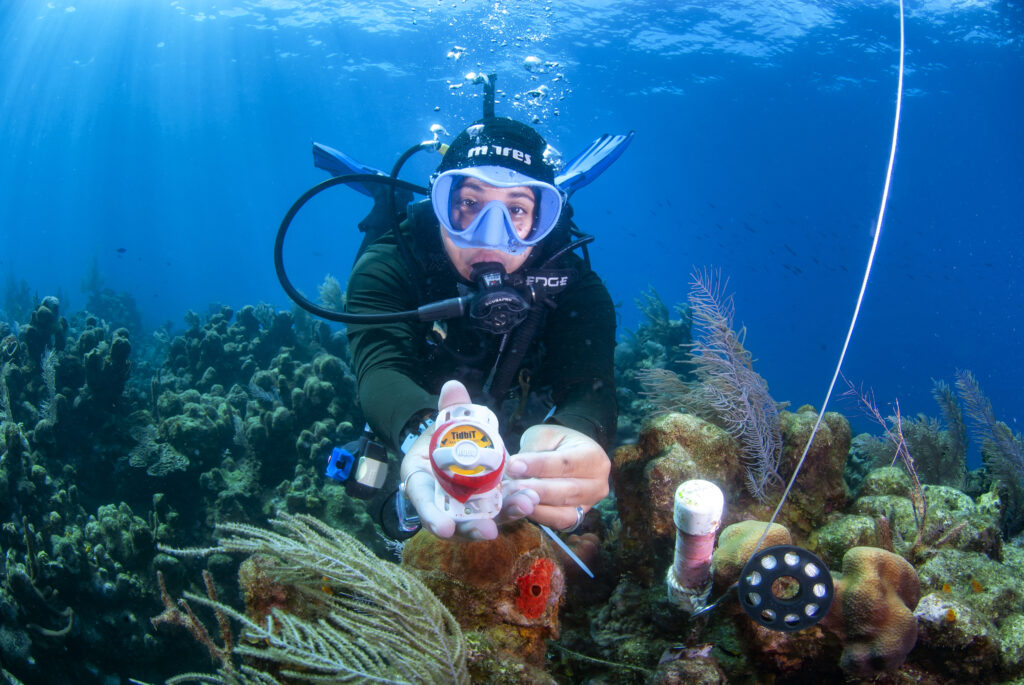Forty underwater temperature loggers now sit underwater on coral reefs across the Bay Islands in Honduras. Their purpose? To identify the temperature range that corals can withstand and typically experience within a year.
These ONSET TidBits, as they’re known, measure water temperatures every minute and store the data internally. Every four to five months, a diver heads underwater to download the data provided by the temperature loggers.
The data gives our scientists a better idea of the types of temperatures coral reefs experience in the area. But it could also be the key to helping coral reefs adapt to climate change.

Why Does Water Temperature Matter for Coral Reefs?
Most coral reefs have a narrow temperature range in which they can thrive. When waters get too warm, many hard corals will bleach—they’ll expel zooxanthellae, tiny algae that live inside the coral tissue and photosynthesize, providing the coral with an important food source. If ocean temperatures come back down within a few weeks, the zooxanthellae will return and the corals can recover. But if temperatures stay high, the corals can ultimately die.
Across the globe we’re seeing an increase in both the frequency and severity of coral bleaching events as ocean temperatures rise.
But there is hope. Some corals have survived warming ocean temperatures—these heat-tolerant corals are the key to spreading heat tolerance to other reefs, which will be crucial as ocean temperatures continue to warm. If we protect corals on “hot reefs,” as well as the cooler reefs where their larvae are settling, we can help coral reefs adapt to future environmental conditions and evolve. And gaining a better understanding of the temperature ranges that coral reefs typically experience will help us get there.
Turning the Science into Action
Governments, scientists, communities, and conservationists work diligently around the world to put protections into place for their marine environments. So how can we help them design protected area networks in a way that allows for the spread of heat-tolerant genes?
Our TidBit research hopes to inform this question.
The temperature loggers were placed at 20 sites around the Bay Islands, with two loggers per site, about 200-400 meters apart. Scientists took georeferenced photos of the reef along the transects between the two temperature loggers, so temperature data can be compared to a reef’s composition. Now, we can start to answer questions like “can reefs with more species diversity or greater structural complexity also tolerate more heat?”
Scientists hypothesize that by better understanding the relationship between a reef’s structure and a reef’s temperature range, we can create a tool that would allow practitioners around the world to estimate a coral reef’s adaptation potential.
Let’s say there is a strong relationship between reef structure and heat tolerance—for example, reefs that are more structurally complex tend to be more heat tolerant. If that’s the case, then couldn’t tools like the Allen Coral Atlas, that can detect a reef’s structure using satellite imagery, also tell us whether or not a reef is more heat tolerant? And if the Atlas is free and online, then couldn’t governments use it to help determine which reefs they should protect based on which reefs are more likely to spread heat tolerance?

Paving the Way Forward
We are actively working with our local partners to gather and analyze the Tidbit data that is being collected across Honduras. We’re also looking to expand the TidBit data collection to other locations to see if the relationship between reef structural complexity and temperature in the Mesoamerican Reef region is the same in other locations.
With our partners, we’re investigating whether we can use tools like the Atlas to provide open-access information about a coral reef’s adaptation potential. And if the answer is positive, it could change how marine protected area networks are prioritized and designed for decades to come.
